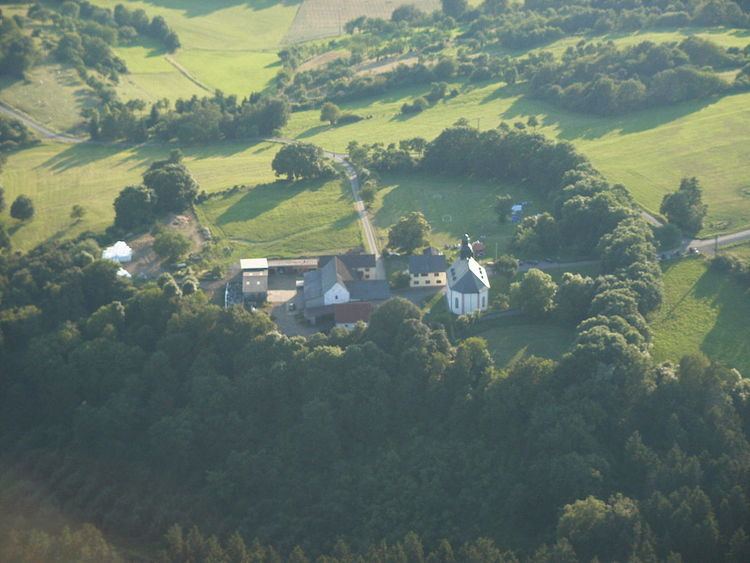Phone +49 6401 7225 | ||
 | ||
Address Reinhardshainer Str. 5, 35305 Grünberg, Germany | ||
Wirberg is a former monastery complex in the district of Giessen. It is located on the eastern edge of the municipality of Reiskirchen between Saasen and Göbelnrod, and about eight miles north-west of Grünberg. The church was once the Protestant Church serving the Grünberg districts of Göbelnrod, Beltershain, Harbach, Weitershain and Reinhardshain. Today, it is used as a church on special occasions.
Contents
- Wirberg gi ev kirche plenum
- History
- 16 th century
- 17th century
- 18th century
- 19th century
- 20th century
- References
Wirberg gi ev kirche plenum
History
The name "Wirberg" comes from Wereberch, meaning "fortified hill". There was a fortified castle there at the beginning of the twelfth century.
The Premonstratensian monastery was founded as a double monastery between 1134 and 1148 by the Premonstratensian Otto von Cappenberg, who was provost of the Cappenberg monastery until his death in 1171. Cappenberg was founded as a double monastery. His brother, Godfrey of Cappenberg, had already founded Ilbenstadt Monastery.
The female founder was Aurelia, the daughter of Manegold von Wirberg, who brought her inheritance with her as a dowry. The patron saints of the monastery were the Virgin Mary and St. Martin. Toward the end of the thirteenth century, the double monastery became just a nunnery, and in 1286 the sisters switched to the Order of Augustinian Canonesses.
During the Reformation in Hesse, the monastery was dissolved in 1527 and its assets were transferred to the University of Marburg. During the Thirty Years' War, in 1635, the rectory was destroyed and the church was damaged. After the end of the war, in 1658, it was rebuilt, and in 1690 a new rectory was built. In 1716, the tower of the church collapsed and destroyed the nave. The present church was built on the site of the ruins in 1753-1754 and consecrated in 1755. It is still used for weddings and baptisms, and the restored buildings are now used as a recreation centre for youth groups of the Protestant Church in Hesse and Nassau In the summer, the meadows in front of the monastery are used as a camp site for youth groups, boy scouts and girl guides.
